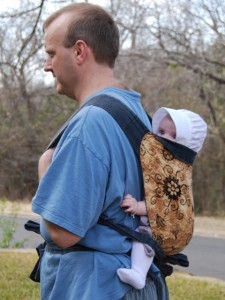When my first child was born I often felt like I was swimming against the current. My decisions to exclusively breastfeed, co-sleep, wear my baby and practice gentle discipline often set me apart from other parents. For the most part, that was fine with me. I had carefully considered my decisions, and was comfortable with them. But I would be lying if I said I didn’t experience the occasional twinge of self-doubt.
From time to time, and particularly when I was having ‘one of those days’, I wondered if I was making a horrible mistake. What if I was really just being over-indulgent? What if all of the things I did to foster a secure connection ended up creating a monster? I know that all parents face these sorts of questions from time to time. I am no different, I’ll admit it.
My friends and family were very understanding, and accepted my parenting decisions without question. Their support meant a lot to me. As my daughter grew, though, I began to sense an undercurrent of doubt from them as well. Breastfeeding a 2-year-old is still very unusual in our culture. Foregoing the naughty chair is, too. I might have been projecting my own concerns, but I think they sometimes wondered how all of my wacky ideas would turn out in the end.

My attachment-parented children
By the time my daughter became a preschooler things turned around. She grew old enough to speak for herself. She weaned from the breast. She decided she wanted to walk instead of being carried. She grew into an outgoing and independent little girl. In short, she did all of those things that attachment parenting advocates said that she would.
Today my daughter is 4 1/2 and my son is 14 months old. They are both still very young children, relatively speaking. But as they’ve gotten older they have both silenced my self-doubt, and the doubts of others. It’s one thing to read about attachment theory, it’s quite another to see it play out in front of your eyes. There is no greater endorsement of attachment parenting than watching attachment-parented kids are grow into great little people.
If I could go back and tell myself one thing in the early days of parenting, it would be that it gets easier. As your little ones grow and develop and mature, you reach a point where you don’t need to explain your parenting choices anymore. This is even more true when you have another baby. Issues that generated a lot of discussion with my first child didn’t even merit a thought with my second. These days, for the most part, my attachment parenting choices speak for themselves. I’m so glad that I stuck with it when I was unsure, and that I’ve made it this far.

 Happy
Happy 

